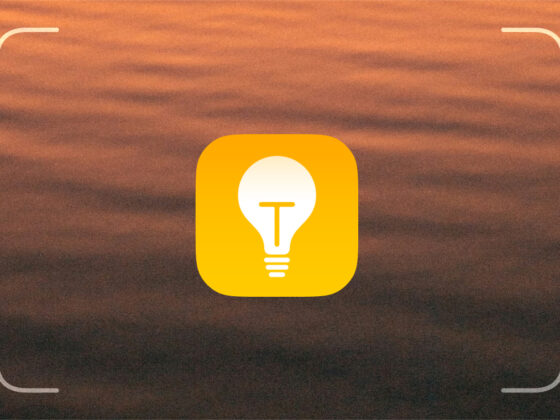Whether you’re a professional sports fan or a parent of young athletes, you will undoubtedly want to capture action-packed moments with your camera from time to time. Do you need a fancy DSLR for sports photography, or can you manage with your iPhone camera? It may surprise you how well your iPhone handles sports photos and shots of moving objects. Here are some of our best sports photography tips, so you’re always ready for action.
Can you shoot good sports photos with your iPhone?
Capturing fast-moving subjects is challenging for any photographer. With action sports photography, you need a quick finger. It’s also very helpful to have a newer model phone with a telephoto lens so you can get a little closer to the action. The iPhone models currently offering telephoto lenses for great sports photography are iPhone 11 Pro, iPhone 11 Pro Max, and all newer Pro series.


If you are shooting with a model that doesn’t offer this feature, you can still take decent sports photos. The secret will be getting as close as you can to the action without using your digital zoom. Or you could invest in an external telephoto lens for your iPhone.
What makes a good sports photo?
Sports photography is tricky because the subjects you are trying to capture move so quickly that it can be difficult to freeze the action without the image being blurry. A good sports photo is sharp and should capture the emotion or conflict of the moment. As a photographer, your job will be to pay close attention to whatever is going on and to be ready to snap a photo at the most critical moments of the game, match, or race.
Sports photography tips and settings
Before you head out with your camera to capture images of your favorite sport, you should have your iPhone settings dialed in so that all you need to do is tap the shutter to capture the drama on the field. Your iPhone camera does almost everything for you, but there are a few settings that you need to adjust manually for the best results. Here are the settings we recommend for all types of sports photography.
iPhone camera settings to use for sports photography
The most important setting to use when practicing your sports photography is Burst mode, which allows you to take numerous photos in quick succession so that you can capture all the action and then choose your favorite shots later. Your iPhone’s Burst mode can take about 10 frames per second, which is perfect for capturing the fast action of sports like running, basketball, football, and water sports. To use Burst mode on your iPhone camera, hold your finger on the shutter and drag it to the left. Keep your finger on the shutter for as long as you want to to keep taking photos.
Another helpful iPhone setting to help you with composing your action shots is the grid overlay, which produces gridlines to help ensure that the horizon is straight in your photos. This tool also makes it easier to use the rule of thirds for a more interesting composition. To enable your camera grid, go to your iPhone Settings, choose Camera, and then toggle on the Grid option.
Apps and gear to capture movement better
Once you start shooting sports photos with your iPhone camera, you’ll likely be impressed with the quality of your images. But there are a few additional tools you can add to your sports photography kit to give you more flexibility when shooting in various conditions. Here are a few of our favorite pieces of gear to level up your action shots:
- A manual camera app: While the native Camera app on your iPhone does a great job of capturing sports photos with automatic settings, a camera app with manual features gives you more control. Camera+ has full manual controls, including shutter speed settings, so you can create stunning long-exposure action shots.
- A fish-eye and telephoto lens: A fish-eye lens is a specialty lens that can give photos a dynamic feel that’s ideal for sports photography, producing ultra-wide images with distorted angles and pronounced curvature. And a telephoto lens is useful for shooting sports like football and basketball from up in the stands.
- A waterproof case for your iPhone: A waterproof iPhone case is a must if you’re shooting water sports photography.
- A portable tripod: For sharp images, it helps to have a small, flexible tripod. This will reduce camera shake, which can make your sports photos blurry.
Running photography tips
Running photography poses unique challenges, but it’s also one of the easiest sports to practice your photography on. When you photograph someone running, you are only focusing on that single athlete, even if there are other runners in the photo. Here are some tips for running photography.
1. Choose a photo that captures an interesting stride
Burst mode really comes in handy when photographing runners. Shoot multiple images so that you can look for a stride that balances your composition. You want to capture the runner’s legs and arms far enough apart from each other so that they stand out, with one or both feet off the ground. This is easiest to capture when the runner is in profile, but you should also shoot a few images from the front and the back so you can choose your favorite composition later.
2. Focus on the runner’s face
There are several reasons why focusing on the athlete’s face makes sense. From a technical standpoint, the runner’s face isn’t moving as much as the rest of their body, so it will be easier to get sharp facial features than it will be to keep their limbs in focus. Capturing the runner’s face will also help tell a more interesting and emotional story. Whether they are experiencing the elation of crossing the finish line, the pain of defeat, or a rush of endorphins, it will show in their expression.
3. When shooting a race, choose your background ahead of time
If you are capturing runners in a race, it can be beneficial to scout the course ahead of time and look for backgrounds that won’t distract from your shot. The finish line will always be crowded with onlookers, but you should be able to find a quiet spot along the race route with an uncluttered background to take some photos. Pick two or three spots and plan how and when you will get there with your camera.
4. Try panning to blur the background behind the runner
Panning is a creative tool that you can use to blur the background of a photo while the main subject remains in focus. To do this properly, you will need a slower shutter speed than what the iPhone uses in the Camera app. Camera+ mentioned above is especially useful for this technique. Set your shutter speed to 1/8 to start — you may have to adjust this depending on your subject. Now move your camera in the same direction as your moving subject while pressing the shutter. Panning requires a lot of practice, but it’s also a lot of fun.
Shooting football and basketball photography
Football and other field/court sports are interesting to photograph, especially if you already love the game. Here are some tips for capturing shots of your favorite athletes while playing team sports.
1. Learn the player positions so you know what to expect
It may not occur to a novice photographer that when it comes to football or other team sports, it’s important to learn the positions and have a basic understanding of what each player is expected to do on the field. When you know what each athlete’s job entails, you will be better able to predict aspects of the game — and be prepared with your camera. In football, for example, a center won’t be as mobile as a running back, so you will have an easier time getting a compelling shot without having to track a fast-moving subject.
2. Track the ball with your camera
If you’re not sure where to look, you can’t go wrong tracking the ball, which is always where the action is. The more games you attend, the easier this will be. And remember, Burst mode is the best way to capture those action shots when the ball is in play.
3. Use your telephoto lens to capture more drama
When shooting from the stands, you’ll want to use a telephoto lens to get a bit closer to the action. The iPhone 11 Pro, iPhone 11 Pro Max, and newer Pro models all have telephoto lenses that you can use to get closer to the game. If you are shooting with a model that doesn’t have a telephoto lens, consider purchasing an external lens (suggestions above). Avoid using your iPhone’s digital zoom, which will drastically reduce the quality of your image.
Water sport photography tips
If you’re looking for a new challenge, why not add water to your sports photography? Water sports add an unpredictable element to your photos, and they are great for practicing unusual compositions. Water sports include swimming, surfing, boating, and even fishing, so if you love water and photography, why not combine the two and experiment? Here are some water sport photography tips to help you get started.
1. Get down to the level of the water or lower
When shooting water sports, composition is extremely important, and the possibilities are endless. If you’re shooting with a waterproof case, you can get creative with your shots by shooting at water level or even lower. Shooting underwater gets you closer to the action than capturing the image from above the surface or on the shore. You will notice all the details within the water — droplets, bubbles, and waves — and can use them for a unique composition.
2. Shoot during the golden hour if possible
The golden hour is the period just before sunset and just after sunrise. Photos taken during the golden hour have a warm glow and soft shadows that you won’t see in photos taken during other times of the day. When shooting water, it’s particularly important to avoid harsh sunlight that, when reflecting off of the water, can cause your images to appear washed out. The golden hour is a great way to capture more subtle reflections, silhouettes, and details within the water.
3. Leave plenty of space in front of your subject in the water
Whether you’re photographing swimmers, surfers, or sailboats, try to tell the story of the athletes within your image. One way to do this is to leave space in front of your subjects to represent where they are going. This also allows you to capture whatever body of water you are shooting for a more well-rounded composition.
When it comes to quick-moving action photography, you need to plan ahead and be ready to move fast. Sports photography takes a lot of practice, but it’s also one of the best ways to improve as a photographer.



